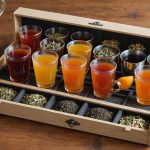Handling raw shellfish safely is not just a regulatory requirement—it's vital for the health of your customers and the reputation of your seafood eatery. From storage temperatures to cross-contamination prevention, each step is essential. Understanding the specific risks associated with shellfish can make all the difference in ensuring delicious, safe offerings. Discover practical tips to elevate your food safety practices while providing a culinary experience that keeps diners coming back for more.
Importance of Safe Handling of Raw Shellfish
Ensuring the safe handling of raw shellfish is crucial for maintaining both public health and a business's reputation. Foodborne illnesses associated with shellfish, such as Vibrio and norovirus infections, can have severe health consequences. These illnesses often arise from improper handling or storage, making food safety practices essential.
Also read : Enhance your meals with an innovative ipad menu system
Safe handling practices also impact customer trust and business reputation. A single outbreak linked to a restaurant can lead to significant loss of clientele and damage to the establishment's credibility. The importance of shellfish handling is underscored by the potential for negative publicity and financial loss.
Legal implications further emphasize the need for compliance with health regulations. Businesses that fail to adhere to these standards may face fines, legal action, or even closure. Compliance with regulations not only protects customer health but also safeguards the business from legal repercussions.
Also to see : Elevate your restaurant”s digital reputation: winning strategies for online success
Key Considerations for Safe Handling
- Storage Temperature: Keep shellfish at appropriate temperatures to prevent bacterial growth.
- Cross-Contamination Prevention: Use separate utensils and surfaces for shellfish.
- Regular Training: Ensure staff are educated on the latest food safety protocols.
By prioritizing these practices, businesses can effectively manage the risks associated with raw shellfish, ensuring both customer safety and business longevity.
Best Practices for Shellfish Storage
Ensuring the optimal shellfish storage conditions is vital for maintaining freshness and safety. Proper temperature control is key, as shellfish are highly perishable and susceptible to bacterial growth.
Ideal Temperature and Humidity Levels
Shellfish should be stored at a consistent temperature between 32°F and 40°F. This range inhibits bacterial proliferation, preserving the quality of the shellfish. Additionally, maintaining adequate humidity levels prevents dehydration, which can compromise texture and flavor.
Methods for Safely Thawing Frozen Shellfish
Thawing frozen shellfish requires careful temperature control to prevent bacterial contamination. The safest method is to transfer shellfish from the freezer to the refrigerator, allowing them to thaw slowly at a controlled temperature. Avoid leaving shellfish at room temperature, as this can lead to unsafe bacterial growth.
Importance of Proper Labeling and FIFO
Implementing a First In, First Out (FIFO) system ensures the oldest stock is used first, minimizing spoilage. Proper labeling of shellfish with dates of receipt and storage conditions is crucial. This practice not only enhances shellfish storage efficiency but also aids in maintaining compliance with health regulations.
By adhering to these best practices, businesses can ensure their shellfish remain safe and of high quality, protecting both consumers and reputations.
Hygiene Protocols in the Seafood Eatery
Ensuring food hygiene in seafood eateries is essential for preventing foodborne illnesses and maintaining a safe dining environment.
Personal Hygiene Practices
Staff members must adhere to strict personal hygiene practices when handling shellfish. Regular handwashing with soap and water is crucial, especially after handling raw shellfish or using the restroom. Wearing clean uniforms and using hairnets minimizes contamination risks.
Cross-Contamination Prevention
Preventing cross-contamination is vital. Separate utensils and cutting boards should be used for shellfish and other food items. Establishments should implement color-coded systems to distinguish these tools. Regular sanitation of surfaces and equipment further reduces contamination risks.
Regular Training and Certification
Continuous employee training ensures staff are up-to-date with the latest food safety protocols. Training programs should cover personal hygiene, cross-contamination prevention, and proper handling techniques. Certification from recognized food safety organizations enhances employee competence and confidence.
Food hygiene and employee training are integral to maintaining safety standards in seafood eateries. By prioritizing these areas, businesses can protect their customers and their reputation. Regular audits and updates to safety protocols ensure ongoing compliance and improvement in food handling practices.
- Key Practices:
- Handwashing
- Use of protective clothing
- Separate tools for shellfish
Implementing these protocols fosters a culture of safety and vigilance, crucial for any successful seafood establishment.
Guidelines for Shellfish Preparation
Understanding the nuances of shellfish preparation is essential for ensuring both safety and flavor.
Recommended Cooking Temperatures
Ensuring shellfish reach the correct cooking temperatures is crucial to eliminate harmful bacteria. For example, oysters, clams, and mussels should be cooked to at least 145°F. This temperature ensures safety while preserving the delicate texture of the shellfish. Lobsters and crabs, on the other hand, require a slightly higher temperature of 165°F to ensure thorough cooking.
Techniques for Safely Shucking and Cleaning
Shucking and cleaning shellfish are critical steps in preparation. Always use a proper shucking knife to avoid injury and ensure efficient shell removal. Rinse shellfish under cold running water to remove sand and debris. For mussels and clams, scrub the shells and remove the beard from mussels to enhance cleanliness.
Importance of Using Separate Equipment
To prevent cross-contamination, use dedicated equipment for shellfish preparation. Designate specific cutting boards and knives for shellfish to maintain hygiene. Implementing a color-coded system can help staff easily identify these tools.
- Cooking Temperatures: Oysters: 145°F, Lobsters: 165°F
- Shucking Tools: Use shucking knife
- Separate Equipment: Color-coded system
Adhering to these guidelines ensures safe and delicious shellfish dishes, fostering trust and satisfaction among diners.
Sourcing Quality Shellfish
Ensuring the best shellfish starts with selecting the right suppliers.
Criteria for Selecting Reputable Suppliers
Choosing quality shellfish suppliers involves evaluating several key factors. Prioritize suppliers who maintain high supplier standards, ensuring consistent quality and safety. Look for those with a proven track record, positive reviews, and a commitment to sustainable practices.
Importance of Third-Party Certifications and Inspections
Third-party certifications are crucial for verifying that a supplier meets industry standards. Certifications from organizations like the Marine Stewardship Council (MSC) or the Aquaculture Stewardship Council (ASC) indicate adherence to supplier standards and sustainable practices. Regular inspections by these bodies ensure ongoing compliance and quality assurance.
Seasonal Considerations and Local Sourcing Benefits
Sourcing shellfish locally and seasonally can enhance quality and sustainability. Local sourcing reduces transportation time, ensuring fresher products. Seasonal considerations ensure that quality shellfish are harvested at their peak, offering superior taste and texture.
- Key Benefits:
- Enhanced freshness
- Reduced environmental impact
- Support for local economies
By focusing on these criteria, businesses can ensure they provide the best products to their customers, reinforcing trust and satisfaction in their offerings. Prioritizing supplier standards and certifications is fundamental to achieving this goal.
Common Hazards in Shellfish Handling
Understanding the risks associated with shellfish handling is crucial for ensuring food safety.
Identification of Common Pathogens
Shellfish are often carriers of pathogens such as Vibrio, norovirus, and hepatitis A. These microorganisms thrive in marine environments and can pose significant food safety risks if not properly managed. Consuming contaminated shellfish can lead to severe gastrointestinal illnesses. Regular testing and monitoring of shellfish sources are essential to mitigate these shellfish hazards.
Overview of Shellfish-Related Allergy Concerns
Shellfish allergies are among the most common food allergies and can trigger severe reactions. Symptoms range from mild hives to life-threatening anaphylaxis. Awareness and clear labeling are key strategies in managing these food safety risks. Establishments must ensure that all staff are trained to recognize and respond to allergy emergencies swiftly.
Strategies for Minimizing Risk of Contamination
To address shellfish hazards, implement rigorous hygiene protocols and temperature controls. Use separate utensils and surfaces to prevent cross-contamination. Regular staff training on food safety risks and pathogen management is vital.
- Key Strategies:
- Regular pathogen testing
- Allergy awareness and labeling
- Strict hygiene practices
Prioritizing these strategies significantly reduces the risk of contamination, ensuring a safer dining experience for all customers.
Relevant Regulations and Certifications
Compliance with seafood regulations is essential for ensuring public health and business integrity.
Overview of FDA and Local Health Department Regulations
The Food and Drug Administration (FDA) and local health departments set stringent seafood regulations to safeguard public health. These regulations encompass health compliance measures such as proper storage, handling, and labeling of seafood products. Businesses must adhere to these standards to prevent contamination and ensure consumer safety.
Importance of Maintaining Certifications
Maintaining certifications like the Hazard Analysis Critical Control Point (HACCP) is crucial for health compliance. These certifications demonstrate a business's commitment to following seafood regulations and implementing effective safety protocols. Regular audits and updates to these certifications help businesses stay aligned with evolving health standards.
Penalties for Non-Compliance and the Role of Inspections
Non-compliance with seafood regulations can result in significant penalties, including fines or business closure. Inspections by health authorities play a vital role in ensuring health compliance. They assess whether businesses meet the required standards and identify areas for improvement.
- Key Compliance Factors:
- Adhering to FDA guidelines
- Maintaining HACCP certification
- Regular health inspections
By understanding and implementing these seafood regulations, businesses can protect their customers and sustain their operations effectively.
Visual Aids and Resources for Staff Training
Enhancing the effectiveness of training through visual tools and resources.
Benefits of Using Infographics and Checklists
Incorporating visual resources like infographics and checklists into staff training significantly enhances comprehension and retention. These tools present complex information in a simplified manner, making it easier for staff to understand and remember critical food safety practices. Infographics can illustrate safe shellfish handling steps, while checklists ensure no crucial procedure is overlooked.
Examples of Effective Training Materials for Shellfish Handling
Effective training materials should be clear, engaging, and practical. For instance, a step-by-step infographic on shellfish storage temperatures can serve as a quick reference guide. A laminated checklist detailing daily hygiene protocols ensures staff maintain consistent standards. These visual resources not only aid learning but also serve as daily reminders.
Resources for Ongoing Education in Food Safety Practices
Continuous staff training is vital for maintaining high standards in shellfish handling. Resources such as online courses, webinars, and updated infographics provide ongoing education opportunities. Regularly updating training materials with the latest industry practices ensures that staff remain knowledgeable and competent.
- Key Visual Resources:
- Infographics
- Checklists
- Online courses
By leveraging these visual resources, businesses can foster a well-informed workforce, crucial for maintaining food safety and quality.













